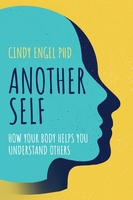
How and why we sometimes feel what others are feeling.
What is Somatic Empathy?
“experiencing what other people feel while being aware that this vicarious state is produced by someone else.”
A few take aways from Another Self:
· It is normal to share others’ emotions, physiological arousal, aches and pains, even thought processes.
· Somatic empathy is an ancient pre-verbal intelligence, a means of understanding others by experiencing them.
· Physiological synchrony and brain coupling between mothers and their infants seem to facilitate self-regulation later in life.
· Trauma can pass from person to person via somatic empathy.
· Neurodiversity and hypersensitivity often reflect greater reliance on somatic empathy to read social situations.
· Somatic empathy is an effective means of nonverbal communication between humans and other animals.
· Somatic empathy with traumatic information from attention-grabbing media can lead to accumulated harm.
Be mindful of exposure to ‘news’ and violent ‘entertainment’.
· We can avoid taking on any negative states of others while maintaining sensitivity.
About the Author
Many of us occasionally feel what others are feeling as if it were happening to us; seemingly sharing their headache, physical pain or sadness. Although a relatively common experience, scientists are only now beginning to unpack how and why this happens. My interest in this topic began over 20 years ago with a series of unexplained peculiar experiences during my work as a bodywork therapist. My background as a research biologist led me to explore what was being published about any psychobiological mechanisms [more about me]. Now, research in social perception reveals that this ‘sharing of felt experience’ is happening to all of us, mostly beneath conscious awareness. Known as interpersonal physiology by social neuroscientists, afferent empathy by cognitive scientists, and transference by psychotherapists, it turns out to be an essential aspect of social intelligence which we share with other mammals. If and when we become aware of this experience, we can call it somatic empathy.
My desire to spread awareness of how and why somatic empathy happens, has led me to develop a range of informational resources:
a 300-page book Another Self detailing fully referenced scientific explanations [links below] aimed at a non-specialist audience.
articles on my blog page, the online magazine Medium, and Psychology Today
workshops and webinars in the UK and Europe [see events]
an ebook Somatic Empathy: an overview (what, how and why it happens) illustrated 44 pages in my store
psychotherapists and counsellors could read the free pdf download of an article Feeling the Client’s Pain in Healthcare magazine
QR code or “buy now” link below [only for UK].

ANOTHER SELF
How Your Body Helps You Understand Others
Paperback ISBN 9781-80049-280-6 to order from preferred bookshop | Amazon, Kindle, Audible.
Another Self explains why we sometimes take on the physical, emotional, and even mental states of others. In this book—the first overview of somatic empathy—Dr Cindy Engel brings together research into social perception and interpersonal physiology to explain how and why our thoughts and feelings are not always entirely our own.
New evidence reveals that this tendency to 'catch' others' emotional and physiological condition is not merely a quirk of sensitive individuals but a fundamental aspect of human intelligence—that feeling with others is an ancient preverbal strategy enabling us to predict others’ intentions.
Understanding how somatic empathy affects us without our knowing, enables us to sidestep the perils of secondary trauma, overwhelm, and burnout while optimising comprehension of our social world.
Be prepared to reassess your sense of self, your relationships, occupation, and even choice of entertainment.
“‘Another Self’ reminds us how connected we are with each other and also with non-human animals through somatic empathy which can work much faster than conscious thinking and moves us at a deeper level. This book is an excellent overview of the subject which combines scientific research with personal experience and vivid examples. I must enjoyed reading it and my copy is full of pencilled notes.”
“A truly astounding book. Beautifully written and deeply researched, ‘Another Self’ should be read by every doctor, nurse, therapist, bodyworker and complementary medicine practitioner.”
“Another Self is a wonderfully validating book explaining in depth the mechanisms behind the intuitive experiences which we therapists rely upon but have not previously been able to fully understand. A must read.”
“Great book!”
“I couldn’t put this down! Cindy masterfully guides us through the intricate science of self-awareness, emotional intelligence, and the profound connections we forge at a deep, human level. This is especially crucial for individuals grappling with PTSD, offering them vital insights.”




